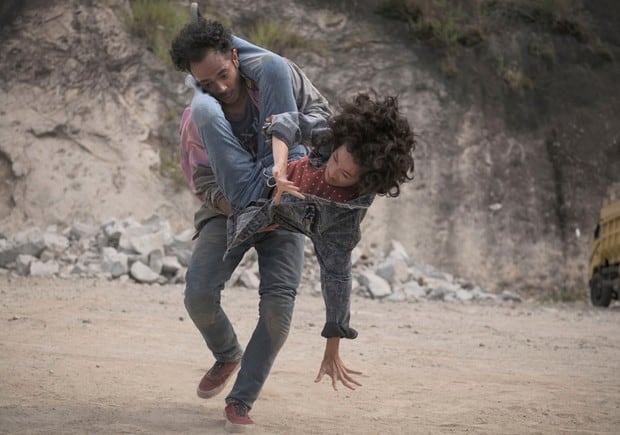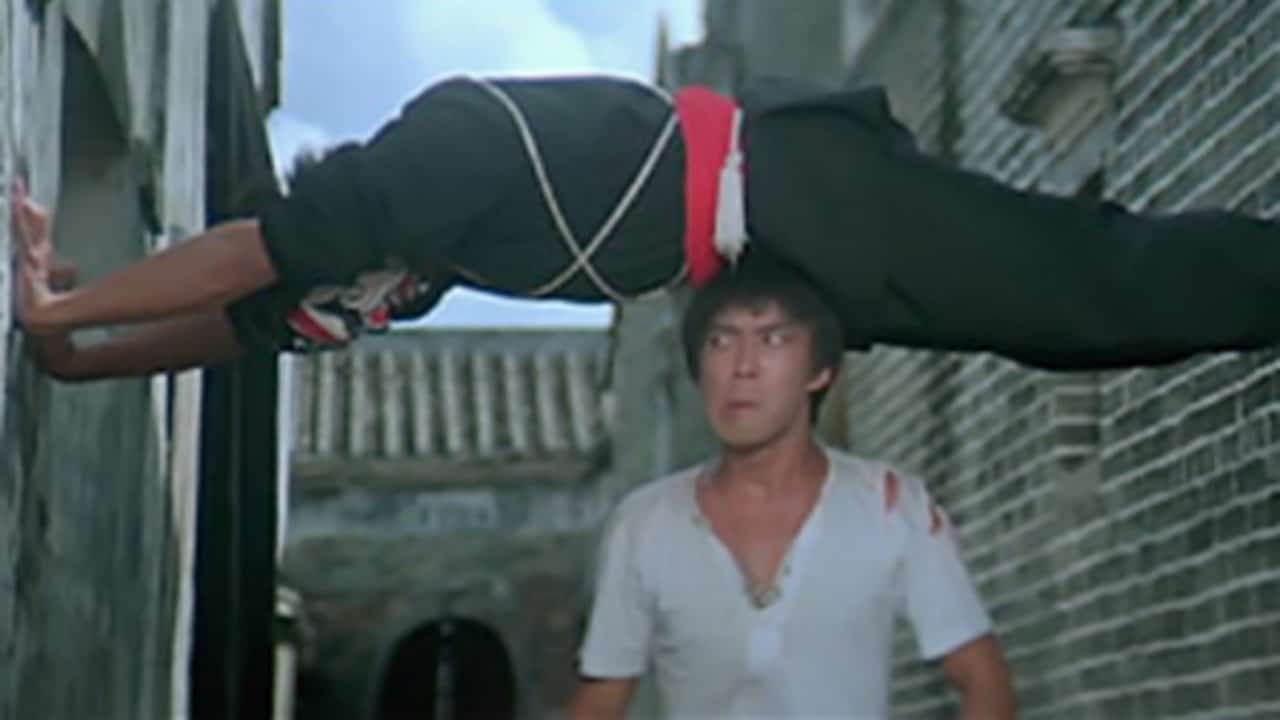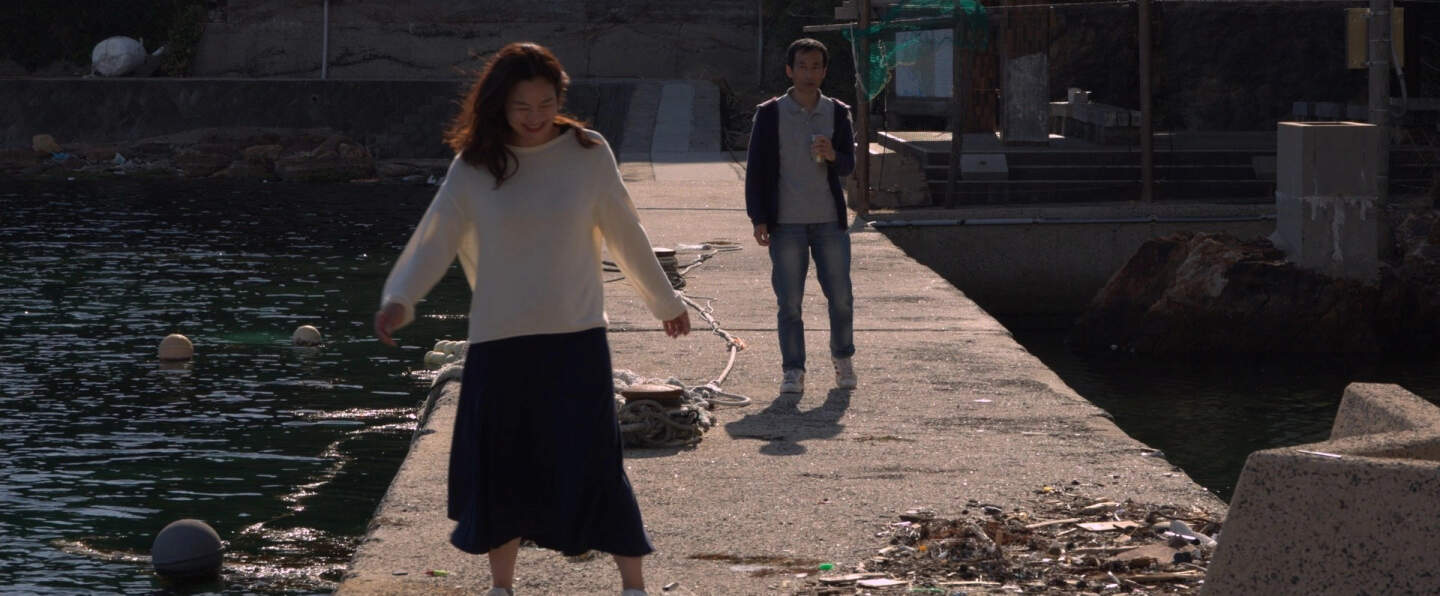Indonesian director Edwin is not an unfamiliar name in the festival circuit. His debut feature, “Blind Pig Who Wants to Fly” (2008), won several international awards. His second full-length movie “Postcards from the Zoo” (2021) marked the return of Indonesian cinema to the main competition after almost five decades of absence. His latest venture “Vengeance Is Mine, All Others Pay Cash”, which grabbed Golden Leopard at this year's Locarno, however, differs significantly from his previous works. So far Edwin has romanced with art house dramas. “Vengeance…”, an adaptation of Booker-nominated novel by Eka Kurniawan's (script's co-author), as its batty title might suggest, swings to more commercial territories.
“Vengeance is Mine, All Others Pay Cash” is screening at Five Flavours Asian Film Festival

Having set his story in the late 80s, Edwin re-visits the popular cinema of the era. He nods not only to Indonesian movies (with a special place for martial arts ones), but to many tropes occupying the common conscience of that days: American pop culture, Hong Kong gangster and fight films, exploitation cinema, B-class horrors, and revenge movies and so on.
It starts on a pastiche and ironic tone. Ajo Kawir (Marthino Lio), a fist for hire working mostly for a local thug affectionately called “Uncle Gembul” (Piet Pagau), takes part in an idiotic race, testing his manly prowess. It is a chicken game on shabby motorbikes, and the winner picks up an empty beer bottle from a road. Ajo wins and celebrates in style. But immediately the director blinks to the audience, in a witty explanation of his protagonist's “flaw”. An advertisement board by the road comes to life for a moment to let us know the folk wisdom: “Only a man who can't get it up can face death without fear”. And yes, you got it right: Ajo suffers from erectile dysfunction.

Inevitably, in a small provincial community, his indisposition is a secret to none. In a society of rough machos, where any derogating from propagated and desired masculine patterns is considered a weakness, he compensates for his impotence with violent fighting, which allows him to manifest strength and power coming with it. Dealing with one of his assignments, Ajo meets Iteung (Ladya Cheryl). She is not the girl you might expect to meet in a testosterone-driven movie: not a fragile twig, requiring protection and savior or a bootylicious sex bomb. Iteung is also a fighter, who kicks male asses with graceful ease. The duo falls for each other, despite Ajo's reluctance to engage into a relationship because of his problem. In a sweet and dorky rendition of flirts of a by-gone pre-social media and pre-smart phones era, they flirt over radio song dedications. Iteung also declares she doesn't care about Ajo's potency and wants him to be her husband. But soon the hilarious story packed with action sequences and multi-genre nods will turn more dark and serious.
Edwin will address various issues, ranging from sexual tension to jealousy to violence against women and revenge. Nonetheless, the stylistic craziness and pastiche and mocking vibe never leave. There will be more painted boards (this time on backs of trucks) coming to life, insane stories of terrifying gangsters reluctant to visit a dentist or even some extra supernatural spice.
The director doesn't rely on nostalgia and isn't romanticizing '70s and '80s aesthetics. It is a pretext for him to contemplate on toxic masculinity, which is the behavioral code Ajo has in his blood, inherited from society. And, what is important, the Indonesian society of Ajo's times is the brutal Suharto's military regime. For Edwin, the violent style, which he turns into a stylized comic distorting the reality through a glass darkly, is a method to research how we normalize the violence. As he said in an interview for Mubi:
I think they are very important to my home country, to Indonesia as well, where genre films have created some kind of cultural DNA. And unfortunately, popular entertainment cinema always involves violence, so we are very used to the idea of the normalization of violence—I guess also because we were ruled by a military-backed president for 32 years, by Suharto. So this cultural format, those celebrated B movies I watched as a kid, those silly action and revenge movies that portray a lot of machismo, felt like reality. It was just very normal to see a man behaving like that. Under the Suharto dictatorship, it just made sense—we respected this man who was celebrating machismo and violence during this period.
The different layers are added to the film through its slowly-disclosed feminism. Ajo's disability, as we came to know, is a result of an act of violence against a woman. It underlays the paradox, the same codes that in social awareness make man manly, destroy them. Edwin also plays smartly with the revenge convention. The matter who will finally take it in whose name should leave the audience satisfied. The director also uses the popular thread of motherhood, which usually make the badass female characters softer, to twist it, against the expectations.
Iteung is one of the most interesting female characters I have seen in a genre cinema in a while, so unlike the typical ladies we encounter in action cinema. She seems flesh and blood, truly human, and thus not free from making mistakes. But at the same, she combines strength and self-determination, is an arisan of her own fortune. Ladya Cheryl plays the character with great empathy and depth in dramatic moments, and shows loads of charisma in action sequences. Ajo, in comparison with Iteung, despite his violent manifestaions of vigor, is rather a failure type. But still, this kind of guy, soft and caring when needed, is able to win a girl. Him, not a brawny macho.
The technical side of movie is also impressive. Fights are fast and furious, and of course with retro vibe. Also, Edwin gathered a well-recognized international crew, editor Lee Chatametikool (Apichatpong Weerasethakul collaborator), and cinematographer Akiko Ashizawa (Kiyoshi Kurosawa's regular), who provided grainy retro shots on 16 mm film. He also used the crews' own experiences to recreate the era. As he explained to Łukasz Mańkowski in an interview:
We didn't want to copy the vibe of the old movies or play with the cinephile references. Rather than that, we decided to trust our memories. I guess it was important for us to realize that the film can send us back in time to the old days, to the 80s or 90s, but also that it can link the past with what exists in the current situation. Since the visual side of the film has its roots in our experience or memories, it starts to exist in the dialogue between the past and our understanding of contemporary issues.















